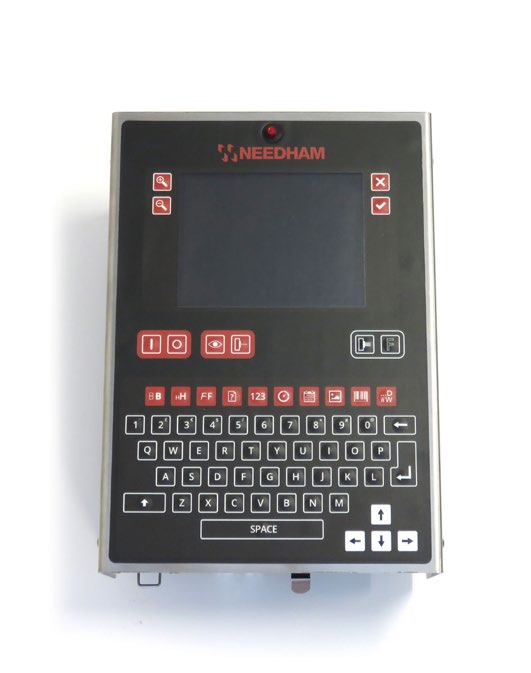Medical packaging, such as blister packs and Tyvek pouches, often require unique handling and inkjet printing systems, and it’s typically found that offline coding systems work best. An offline feeding and transport system helps to automate the printing process or can completely replace the need for a label by printing directly onto the packaging.
What are the benefits of using a thermal transfer offline transport and printing system for medical packaging? Here are a few:
- These systems can accommodate large print width and have an almost limitless print length
- They can print bar codes in any orientation
- The ribbons in an offline printer are ideal for printing on Tyvek and other medical papers, and flat blister cards
Thermal inkjet (TIJ) printers utilize cartridges for printing and that helps to ensure high resolution, reliable printing over surfaces that are not perfectly flat. Other benefits of TIJ printers include:
- The ability to print 2D codes
- Barcoding capabilities
- High speed capacities
- Ink cartridge and print head in one unit, so the print head is new again with every ink change
Continuous inkjet (CIJ) printers are also an option for those looking to print on medical packaging. They bring along their own unique benefits that include:
- They can print at very high speeds
- The ink solvents give very fast dry times on a wide variety of materials
- But operating costs and overhead for printing can be quite high
Knowing the packaging substrate type, the amount of information to be printed, its location on the package and size of the print job is necessary to being able to choose the ideal inkjet printing system for the task.
Foenix Printer Features The market is flooded with various models of ink jet printers across a wide range of technologies, brand names and ink types, which can make it challenging to discern what printer is the best for which application and environment. Many in the industrial and commercial marketplace are loyal to Foenix Coding Printers,...Continue reading→
Within the past year Griffin-Rutgers has noticed a dramatic rise in thermal inkjet coders over continuous inkjet (CIJ) within the food packaging industry for the variable information coding of its packaging. This is a result of the fact that thermal inkjet technology has seen huge advances in the recent years. In the past, the knock...Continue reading→
Over the past decade, designers of TIJ (Thermal inkjet) printers have worked tirelessly to address the limiting factors of the technology. The latest generation of TIJ printers will outperform CIJ (continuous inkjet) in terms of cost of ownership and print quality in most coding applications. Despite the discernible shift to TIJ, there’s still some outdated...Continue reading→
Compared to the traditional printing processes used in the printing of packaging such as flexography and offset lithography, inkjet as a primary method of package printing is relatively new. It’s also an area of growth and opportunity that did not go unnoticed at Drupa 2016, as many vendors focused on packaging solutions using digital inkjet...Continue reading→
There are basically three types of inkjet printers, Thermal Inkjet (TIJ), Continuous Inkjet (CIJ) and Drop on Demand Inkjet (DOD), all with their own key benefits and solutions to specific needs. Understanding the differences between them will help you determine which is best for your printing job. Thermal Inkjet Printers (TIJ) This type of printer...Continue reading→
There are myriad options on the market when it comes to coding and marking of items but the device needs to suit the specific purpose and the items being marked or coded. To make an informed decision you need to understand some of the science behind the technology. One such technology, thermal inkjet (TIJ), was...Continue reading→
Coding and marking products and services for the packaging industry are versatile. Current technology allows you to print on nearly any type of packaging including foil, film, cartons, sleeves, packets, pouches, tubes, cables, lumber and more. Printers also provide the option of printing labels made of paper, plastic or vinyl. Flexible Film & Lid Stock...Continue reading→
Is your company in need of a new printer? Are you considering Inkjet Printers and Laser Printers? Check out this infographic to see how the two measure up to one another!...Continue reading→
Despite its misleading name, Web printers do not relate to the Internet either. Rather, web printers for blisters and pouches are specially designed pieces of equipment that print on what is known as web stock, web material or lid stock. These the materials are webbed together to make pouches or something that has a blister pack—the packaging where you push the tablet or product out through various types of coated and uncoated foils.Continue reading→
The plant and garden industries strive to provide valuable information for their customers to help maintain the beauty and life of all types of greenery. And, for green thumbs to benefit from the information, they need to be able to see it. This means that printing on plant trays plays an integral role because the process must ensure that the information stays put through all types of element-driven environments, often with direct exposure to sunlight, excess water, wind, etc. Enter the Sauven 6000R Plus—a machine noted for its ability to respond to the highly specialized needs of printing on plant trays.Continue reading→







